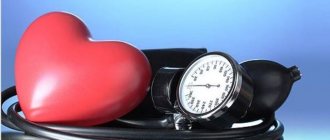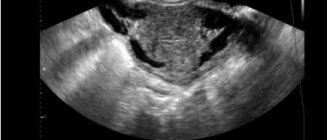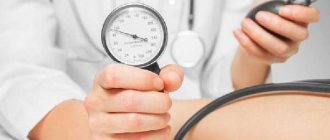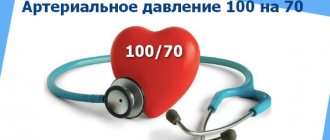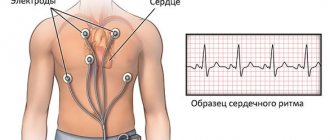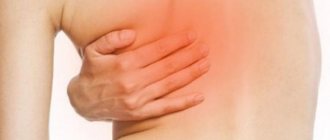There are situations in which you can cope with the ailment on your own: a slight runny nose in the worst case will leave you at home for a couple of days, an intestinal upset will most likely go away after taking the sorbent and following a diet, a headache - a frequent accompaniment of overwork and lack of sleep - will cease to bother you thanks to a full-fledged rest and sleep. When symptoms of cystitis break into your daily rhythm, you should not postpone a visit to the doctor. But which specialist should I contact? We'll tell you which doctor treats cystitis in women and men.
Every year in Russia the diagnosis “Cystitis” appears in medical records more than 26 million times. Most often, representatives of the fair sex make complaints. This predisposition is dictated by the anatomical structure and variable hormonal background of the female body. This sad figure includes both primary and repeated cases of cystitis. People most often turn to a doctor for the first time with unpleasant symptoms around the age of 25–30; a third of those who apply will return to a specialist’s office within a year with a relapse of the disease. At the age of menopause, the percentage increases: up to 60% of women experience cystitis for the first time or again [1].
Symptoms of joint diseases: when to sound the alarm
Joint problems are not only indicated by pain in the knee or shoulder. Sometimes a regular therapist can notice something is wrong during a general appointment. Joint lesions have systemic and non-systemic manifestations. Sometimes they are accompanied by disruption of the gastrointestinal tract, respiratory and cardiovascular systems.
Typical symptoms include:
- soreness and swelling;
- stiffness of movement;
- local redness of tissues;
- compactions and hard formations, for example, with arthrosis of the hand on the phalanges of the fingers;
- a crunching sound that is repeated and causes pain;
- violation of fine motor skills.
In addition, if the joints suffer, the person experiences weakness, may shiver, and general malaise appears. All of this indicates that it is time to seek help.
Joint pain is not the only warning sign
How is cystitis treated?
Treatment of cystitis will most likely be complex. Thus, doctor’s prescriptions may include different methods of therapy.
Medicines
When treating cystitis, the doctor prescribes a wide range of drugs: from antibiotics and uroseptics to painkillers and anti-inflammatory drugs. Instillations can also be used - introducing medications directly into the bladder. The choice of one remedy or another will depend on the identified cause of the disease.
One of the medications used in the treatment of cystitis is the drug Fitolysin® Paste with herbal ingredients. The composition of the paste for the preparation of a suspension for oral administration of Phytolysin® includes a condensed extract of a mixture of 9 types of plant materials, as well as 4 essential oils and other components. It acts on both the source of inflammation and pain, relieves spasms and increases urination so that the body can get rid of bacteria mechanically [5].
Physiotherapy
Magneto- and electrophoresis, laser and EHF therapy, inducto- and hyperthermia: all these methods relieve symptoms and simplify the delivery of drugs to their destination. In addition, the therapeutic effect of magnetic therapy can last up to six months and prevents relapses [6].
If the examination reveals other diseases that could cause cystitis (for example, inflammatory processes in the genital organs, kidney problems, etc.), the doctor will recommend treating them. He will also prescribe a diet that excludes foods that can cause deterioration in health: sweets, pickles, hot and sour foods.
Cystitis is an infectious-inflammatory process in the wall of the bladder, localized mainly in its mucous membrane [3], and with timely initiation and correct treatment, it resolves within 6-8 days. You can avoid recurrence of the disease if you follow simple rules: follow a diet that excludes foods that irritate the bladder mucosa, drink enough fluid to maintain diuresis (2000–2500 ml) [3]. Perhaps, when treating chronic cystitis, your doctor will recommend that you initially keep a urination diary, in which you will note the amount of fluid and urine you drink.
- Russian clinical guidelines Urology Edited by Yu.G. Alyaeva, P.V. Glybochko, D.Yu. Pushkar, Moscow 2021 - (date of access: 04/15/2021).
- Streltsova O.S., Krupin V.N. Immunomodeling therapy of chronic recurrent cystitis in women. Journal of Urology. 2014;(4):35-47. (access date: 06/03/2021).
- Bacterial cystitis in adults. Clinical recommendations of the Ministry of Health of the Russian Federation. - Ed. group: Perepanova T.S., Sinyakova L.A., Lokshin K.L. — (date of access: 06/03/2021).
- Khalilova U.A., Skvortsov V.V., Ismailov I.Ya., Lugovkina A.A., Proleyskaya N.A., Kalinchenko E.I. Cystitis. Nurse. 2018; 20 (6): 6–11. (access date 06/03/2021).
- Instructions for use of the drug PHYTOLYSIN® Paste for the preparation of suspension for oral administration
- Maisumova N.S. Evaluation of the effectiveness of magnetic therapy in the treatment of patients suffering from interstitial cystitis. (access date 06/03/2021).
What does joint pain tell you?
During the initial diagnosis, the therapist will determine the nature and location of the pain. Of interest is the severity of pain at its peak. The specialist will ask what kind of pain you feel - superficial or deep, sharp or dull, burning or another nature. You will be asked to remember under what conditions the pain intensifies, how often it bothers you, and at what time of day it reminds you of itself.
Analyzing these and other factors will help the therapist determine which doctor to refer the patient to. After all, joint pain can be inflammatory or non-inflammatory. It can hinder movement in different ways and produce different accompanying symptoms.
Dentist-therapist
The main field of activity of this doctor: treatment and prevention of caries and its complications. What manipulations does:
- treatment of caries;
- endodontics (work in root canals) for pulpitis, periodontitis;
- root canal retreatment;
- chipped fillings, tooth walls;
- carrying out treatment using a microscope (treatment of caries, work in canals);
- providing assistance for acute toothache.
The therapist also conducts a thorough examination and can refer the patient to related specialists if he notices any pathology.
Which doctor treats joints
Depending on the clinical picture, the therapist may refer you to an orthopedic traumatologist, rheumatologist, surgeon, neurologist, endocrinologist, osteopath or chiropractor.
- Rheumatologist.
Most often, if knee arthrosis or arthritis is suspected, they are referred to a rheumatologist. Before the consultation, you will need to undergo additional tests - for example, rheumatic tests, examination of C-reactive protein, synovial fluid, cryoglobulin analysis, etc.
- Traumatologist surgeon.
They are referred to him in difficult cases, if treatment for arthrosis of the hip joint or therapy for other pathologies prescribed by a rheumatologist has not yielded results. This doctor comes to the rescue when the joints are severely deformed, the disease is protracted and the pain remains even at rest.
An orthopedic surgeon uses arthroscopy, joint replacement, and performs corrective surgeries and other surgical interventions on large joints.
An orthopedic surgeon sees patients with advanced cases
- Orthopedist-traumatologist.
This specialist deals with a variety of diseases of the musculoskeletal system, including congenital and acquired pathologies of joints and tendons, ligaments and muscles. He diagnoses and treats lesions of soft tissue structures, consequences and complications of injuries, post-traumatic arthrosis, and neoplasms.
- Neurologist.
Sometimes the cause of joint pain is neurological in nature - inflammation of a nerve, pinching in the spine, injuries that change the position of the vertebrae, etc. A neurologist also examines functional pain in the joints caused by intensive growth of the body in adolescence, during pregnancy or due to severe physical exertion. As a rule, they go away on their own without treatment, but still need monitoring.
- Endocrinologist.
In some cases, joints hurt due to disruption of hormone synthesis, due to metabolic failures. Excess weight and regular stress lead to their defeat. An endocrinologist deals with such pathologies: a rheumatologist or orthopedist will not help the patient in such cases.
- Chiropractor.
Sometimes therapists recommend that patients turn to alternative medicine. The chiropractor uses the contact method to correct disorders of the musculoskeletal system.
Do your joints hurt? Perhaps your need is not an orthopedist, but a neurologist or endocrinologist
Orthopedic dentist
Dental services include dental prosthetics. It is the orthopedic dentist who deals with all types of dental restoration using orthopedic structures. These include:
- crowns;
- bridges;
- veneers, lumineers;
- inlays, overlays;
- mouthguards, splints;
- temporary structures for long-term orthopedic treatment;
- removable and fixed dentures;
- prosthetics on implants.
In what cases should you contact a specialist?
The therapist will tell you what kind of specialist this will be, depending on the clinical picture. But you definitely shouldn’t hesitate to contact us if you have the following symptoms:
- injuries of any severity - fractures, dislocations, damage to joints and soft tissues;
- chronic rheumatic diseases (the doctor must monitor the dynamics and effectiveness of therapy);
- sudden onset of pain in the joint;
- other alarming symptoms regarding the musculoskeletal system.
Approximately as shown in the video, an initial appointment with an orthopedic doctor takes place:
Dental hygienist
A dental hygienist has a secondary professional medical education. A prerequisite for working as a hygienist is to successfully complete the course “Preventive Dentistry”. What does a dental hygienist do:
- professional oral hygiene;
- treatment of gums with the Vector device;
- whitening;
- provides training in proper oral hygiene;
- selection of personal hygiene products;
- deals with the prevention of gum disease in adults and children.
In short, the main area of work of a dental hygienist is the removal of dental plaque (tartar, plaque). It is important to see a hygienist every six months to maintain oral health.
Monitoring ECG and blood pressure as the study is carried out
Combined Holter monitors can simultaneously record two indicators: electrocardiogram and blood pressure (BP). The only difference between this technique is that in addition to the electrodes that are attached to the chest in different leads to record cardiac activity, a cuff is attached to the arm to measure blood pressure. In this case, ECG registration occurs in a constant mode, and blood pressure is recorded at a certain time interval, which the doctor can set in the device. If earlier it was necessary to install 2 devices to measure ECG and blood pressure, then modern registration systems combine these functions. After removing the device, the doctor uploads data from the digital media of the monitor to the computer. Next, a special program carries out measurements and calculations with the formation of a final protocol.
Pediatric dentist
Treatment and extraction of teeth for patients under 18 years of age is carried out by a pediatric dentist. When working with young patients, the primary task is to find contact with the child and get him ready for treatment, because almost all children enter any medical office with fear. In addition, the children's doctor needs to tell the child's parents how to carry out home oral hygiene for the baby, what products to use, when the physiological change of teeth occurs, etc.
Maintaining dental health from a very early age is necessary for the normal formation of the dental system.
Holter monitoring (HM) – what is it?
This is one of the methods of functional diagnostics, the essence of which is to record an ECG on digital media in conditions where the patient leads his normal lifestyle. The duration of ECG recording with standard Holter monitoring is from 18 to 24 hours. In the classic version of HM, ECG recording in 3 leads is used, for this purpose 7 or 12-channel monitors are used. The recorder is small in size and weight, smaller than a mobile phone. The electrodes are fixed to the body with special suction cups and are located under clothing, unnoticeable to others. After completing the registration of the heart rhythm, the functional diagnostics doctor uses special decoders, which are supplied by manufacturers with the recorders, to decipher and issue a conclusion to the patient. This method is also called 24-hour ECG monitoring or Holter monitoring. The method got its name from the name of the American biophysicist Norman Holter, who proposed using electric monitors to record heart rhythm.
